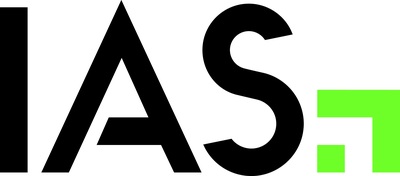IAS ANNOUNCES INDUSTRY-FIRST DEEPFAKE MEASUREMENT CAPABILITIES
Integral Ad Science (Nasdaq: IAS) has announced the launch of the industry's first deepfake measurement capabilities. This Beta offering aims to help advertisers verify the safety of their digital media investments by detecting deepfake content. The innovation will be instrumental ahead of the U.S. elections, providing marketers with AI-driven tools to identify and mitigate the harmful effects of misinformation. The technology uses frame-by-frame analysis and is part of IAS's broader brand safety suite. Currently available for select U.S. advertisers, the solution aligns with the Global Alliance for Responsible Media's standards for brand safety regarding misinformation.
- IAS introduces industry's first deepfake measurement capabilities, pioneering technology.
- The solution is in Beta testing, providing early access to cutting-edge tools.
- Aims to safeguard brands ahead of the U.S. elections, responding to market needs.
- Uses AI-driven Multimedia Technology for frame-by-frame analysis, ensuring high accuracy.
- Deepfake detection aligns with the Global Alliance for Responsible Media's standards.
- IAS's innovation offers up to 74% greater accuracy compared to other methods.
- Technology is part of IAS's broader brand safety and suitability framework.
- Available now for select U.S. advertisers, indicating quick market deployment.
- The deepfake measurement technology is currently only in Beta, indicating it isn't fully tested.
- availability, restricted to select U.S. advertisers, could delay broader market impact.
- Potential market skepticism toward the effectiveness of new unproven technology.
- Possible high costs associated with adopting cutting-edge technology not disclosed.
Insights
Integral Ad Science's new deepfake measurement capability represents a significant technological advancement in the field of digital media verification. Leveraging AI-driven Multimedia Technology, IAS aims to detect and analyze deepfakes with up to
As a retail investor, this development suggests IAS is at the forefront of addressing a critical and growing issue in digital media. This capability could attract more advertisers seeking to mitigate the risks of misinformation and deepfakes, potentially driving revenue growth for IAS. However, the fact that this technology is still in the Beta phase means it may take some time before it generates significant market impact. Investors should monitor how well the Beta testing goes and how quickly IAS can bring this solution to full market availability.
Furthermore, IAS's commitment to benchmarking against open source frameworks and rigorous internal testing indicates a strong dedication to maintaining high standards of accuracy and reliability, which aligns with industry expectations and can solidify its market position.
From a market perspective, IAS's introduction of deepfake measurement capabilities could significantly enhance its value proposition to advertisers, especially in light of upcoming high-stakes events like the U.S. elections. The ability to ensure brand safety in an era where digital misinformation is rampant is a compelling selling point. The partnership with the Global Alliance for Responsible Media (GARM) further adds credibility and aligns IAS with industry-wide efforts to create a safer digital environment.
This move also addresses a growing concern among advertisers about the impact of deepfakes on brand integrity. By providing actionable data to avoid harmful content, IAS can help brands maintain consumer trust and avoid potential PR crises. This could lead to increased demand for IAS's services and potentially higher revenue streams. However, investors should consider the competitive landscape and how quickly rivals might develop similar technologies. A key factor to watch will be how IAS's deepfake detection technology is received by its clients during the Beta phase and any endorsements or feedback from key industry players.
Innovation Builds Upon IAS's AI-Driven Misinformation Reporting To Safeguard Brands Ahead of
"Marketers are looking to leverage new technologies to detect and mitigate the harmful effects of deepfakes and misinformation, and we're excited to offer this latest innovation ahead of the
Deepfake signals, combined with IAS's misinformation categorization capability as part of IAS's industry-leading brand safety products, use AI-driven Multimedia Technology with frame-by-frame analysis to provide the most reliable and accurate data in the industry. IAS's latest innovation aims to detect visual manipulations, including faceswaps in videos and images synthesized by Generative AI technologies, and to protect the authenticity of content aligned to the GARM framework.
"IAS Multimedia Technology safeguards and scales brands across channels, with up to
The deepfake technology is currently in Beta and available now for select US advertisers. To learn more about IAS's misinformation measurement efforts, please visit: https://integralads.com/misinformation/.
About Integral Ad Science
Integral Ad Science (IAS) is a leading global media measurement and optimization platform that delivers the industry's most actionable data to drive superior results for the world's largest advertisers, publishers, and media platforms. IAS's software provides comprehensive and enriched data that ensures ads are seen by real people in safe and suitable environments, while improving return on ad spend for advertisers and yield for publishers. Our mission is to be the global benchmark for trust and transparency in digital media quality. For more information, visit integralads.com.
MEDIA CONTACT: press@integralads.com
![]() View original content to download multimedia:https://www.prnewswire.com/news-releases/ias-announces-industry-first-deepfake-measurement-capabilities-302163202.html
View original content to download multimedia:https://www.prnewswire.com/news-releases/ias-announces-industry-first-deepfake-measurement-capabilities-302163202.html
SOURCE Integral Ad Science, Inc.








